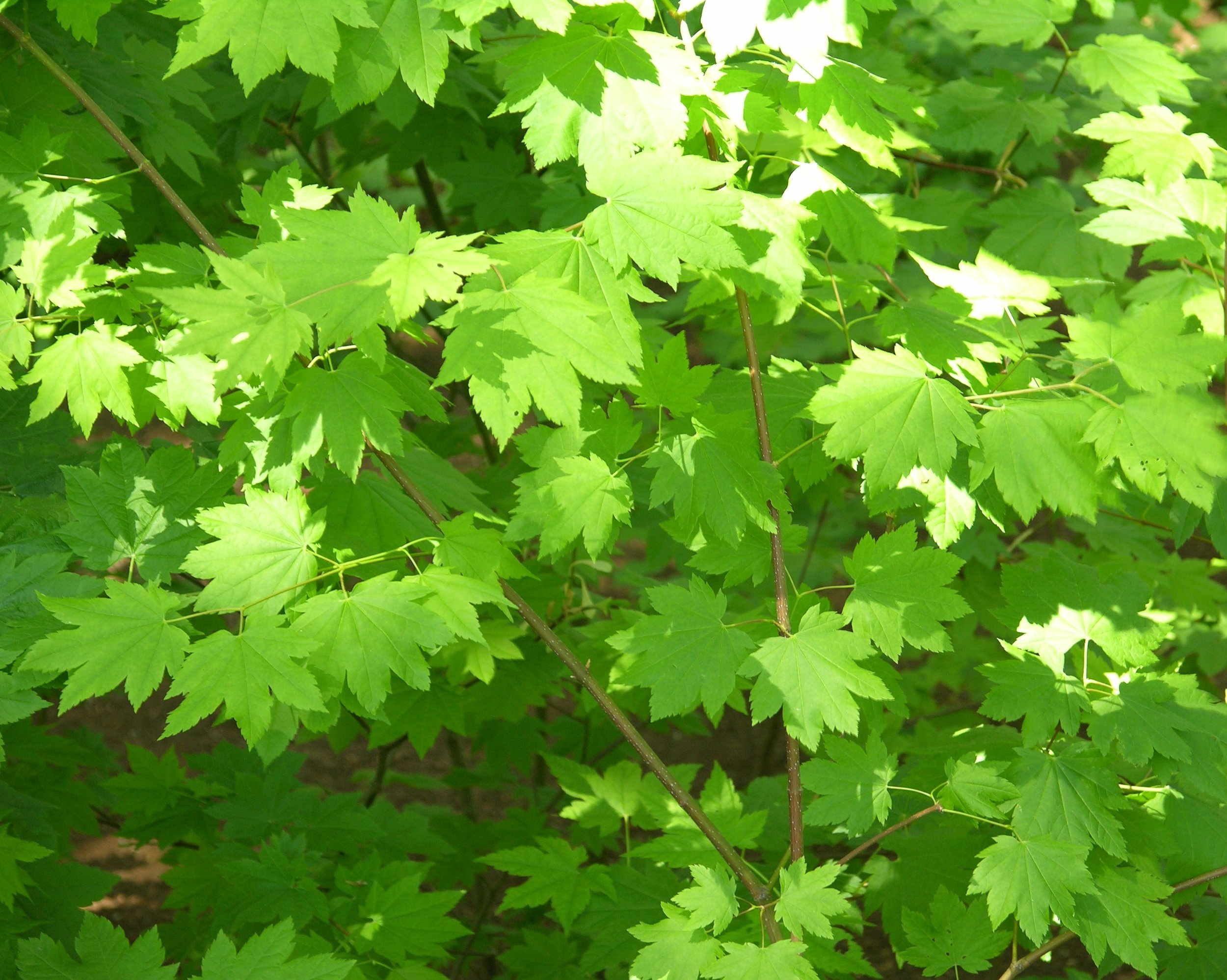Acer circinatum
Vine Maple
This long-lived small tree or shrub is native to moist woods and streambanks from British Columbia to northern California. Although it can reach heights of 20 to 30 feet, it is usually smaller. Vine Maple shows a variety of growth forms depending upon the light level of its situation: In the open, it is usually denser with several erect stems, while in shady areas it often has fewer stems and a prostrate habit with branches rooting where they tough the ground. The leaves turn beautiful shades of yellow, orange, and red in the autumn, and the smooth, bright reddish-brown bark is attractive year-round. Vine Maple produces rose-colored fruits. Vine Maple prefers moist, well-drained soils. This tree is somewhat difficult to find in nurseries.
Wildlife value: Black-tailed Deer and elk browse the abundant foliage; elk will also browse the twigs in winter. Numerous birds and small mammals eat the seeds, buds, and flowers of Vine Maple. Squirrels and chipmunks store the seeds in caches. Many types of birds use the leaves and seed stalks in nest building. Dense shrubs provide good cover for deer, elk, smaller mammals, and birds.
Native American uses: Native Americans called Vine Maple “Basket Tree” because they used its long, straight stems to weave baskets. They also carved its wood into spoons, platters, bowls, and other household items and used its branches as scoop nets for catching salmon.
Other uses: The wood is sometimes used to make tool handles and as firewood.

